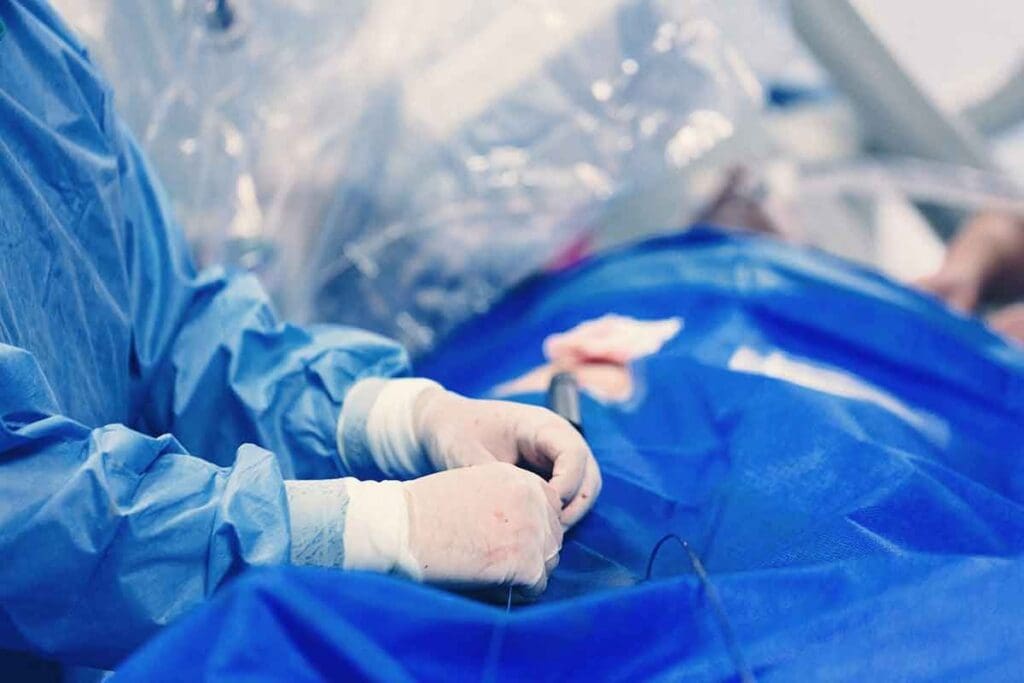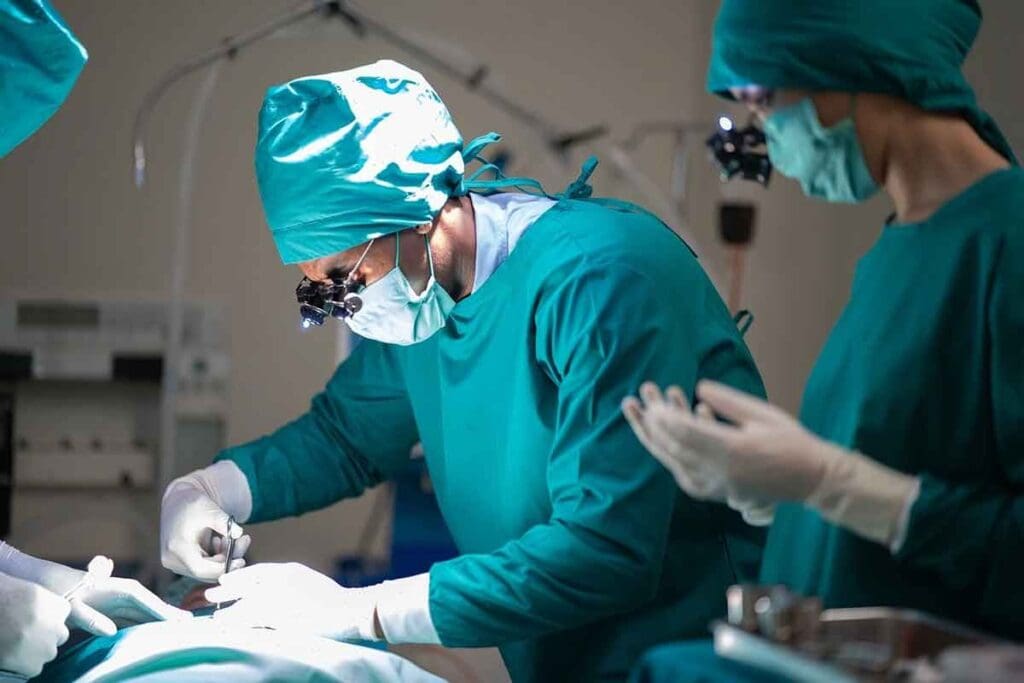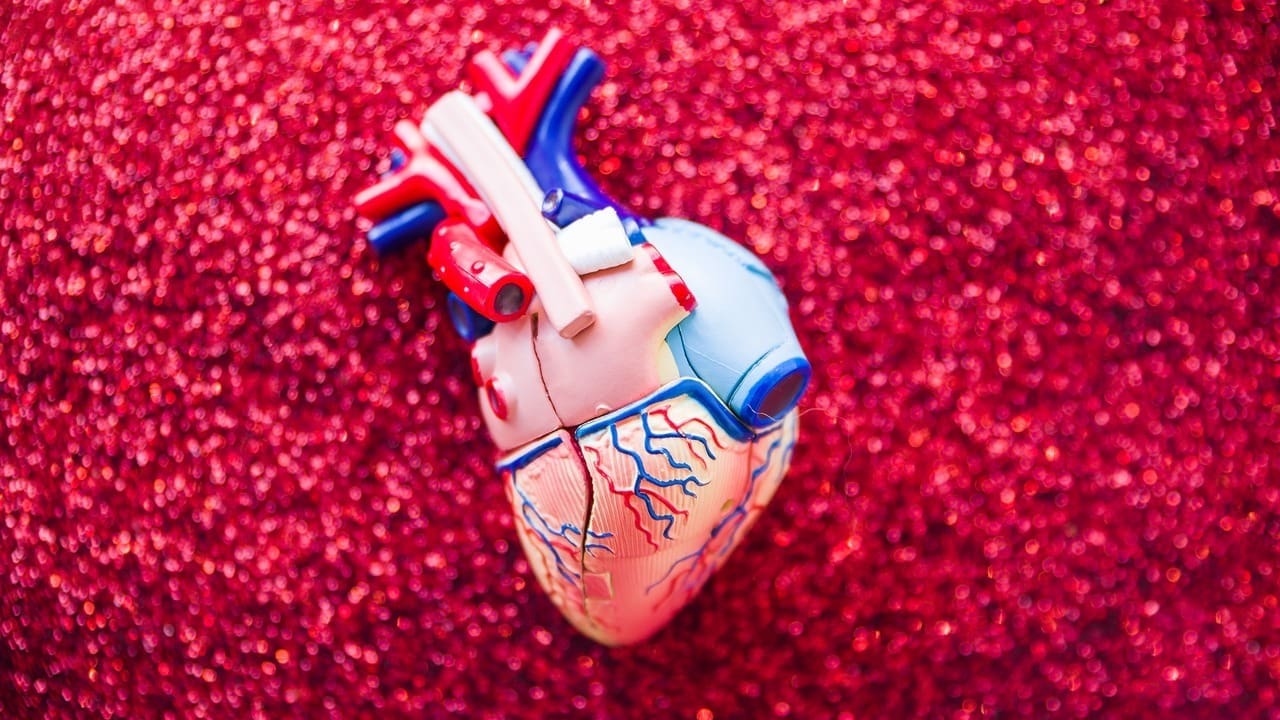Last Updated on November 26, 2025 by Bilal Hasdemir

Abdominal aortic aneurysms (AAA) are a big health risk. But, new medical tech has brought aneurysm stents as a key treatment.
Endovascular repair is a new, less invasive surgery for AAA. It uses an aortic stent. Studies show it cuts down recovery time and lowers risks compared to open surgery.
Liv Hospital is all about new care and keeping patients safe. They use these advanced treatments to better help patients with AAA.
Key Takeaways
- Minimally invasive surgery for AAA repair reduces recovery time.
- Aneurysm stents are a critical component of endovascular repair.
- Aortic stent placement is associated with lower complication rates.
- Liv Hospital is at the forefront of adopting innovative treatments.
- Advanced treatments improve patient outcomes and safety.
Understanding Abdominal Aortic Aneurysms and Their Risks

It’s important to know the risks of abdominal aortic aneurysms. These are serious problems with the aorta that can be very dangerous if not treated.
What Causes Abdominal Aortic Aneurysms
Genetics and lifestyle play big roles in causing abdominal aortic aneurysms. Atherosclerosis, or plaque buildup, is a big factor. Smoking, high blood pressure, and family history also matter.
Many things can cause an abdominal aortic aneurysm. Inflammation in the arteries is a key part of how they form.
Risk Factors and Prevalence
Some things make you more likely to get an abdominal aortic aneurysm. Being over 65, being a man, and smoking are big risks. If your family has had aneurysms, you’re at higher risk too.
- Age over 65
- Male gender
- Smoking history
- Family history of AAA
Men who smoked and are 65 to 75 should get screened for AAA. Ultrasound checks can find problems early. This helps doctors treat them before they get worse.
Dangers of Untreated AAA
Untreated AAA can be very dangerous. It can burst, which is often deadly. The bigger the aneurysm, the higher the risk of bursting.
Knowing about the dangers of untreated AAA is key. Aaa stents are a new way to treat them without surgery. This is good news for people at risk.
Healthcare providers can do a lot to help with AAA. By understanding the causes and risks, they can improve treatment and lower the chance of bad outcomes.
The Evolution of Aneurysm Stent Technology in Modern Medicine

Aneurysm stent technology has changed vascular surgery a lot. It offers a new way to treat aneurysms without the big surgery. This has made patients recover faster and do better overall.
From Open Surgery to Minimally Invasive Approaches
Oldly, treating aortic aneurysms meant a big cut in the belly and a long recovery. But now, aneurysm stent technology has made endovascular repair (EVAR) a top choice. EVAR uses a stent graft to block the aneurysm from blood, stopping it from getting worse.
This new method is done through tiny cuts in the groin. It causes less damage and lowers the chance of problems.
“The introduction of endovascular aneurysm repair has significantly reduced the morbidity and mortality associated with the treatment of abdominal aortic aneurysms.”
How Modern Aortic Stent Grafts Function
Today’s aortic stent grafts are made to last and work well with the body. They have a metal frame (like nitinol) and a fabric cover.
The stent graft is small at first but gets bigger when it’s put in place. It fits tight against the aorta walls, sealing off the aneurysm.
Types of Stent Grafts Available Today
There are many stent grafts for treating AAAs. Each has special features and benefits. These include:
- Unibody stent grafts
- Modular stent grafts
- Fenestrated and branched stent grafts for complex aneurysms
Choosing the right stent graft depends on the patient’s body and the aneurysm. Better imaging and aortic stent graft design help more people get treated with EVAR.
In short, aneurysm stent technology has changed how we treat aortic aneurysms. It gives patients a safer, less invasive option with better results.
Key Fact #1: Aneurysm Stents Offer Significant Advantages Over Open Surgery
Aneurysm stents have changed how we treat abdominal aortic aneurysms. They offer big advantages over open surgery. This shift to less invasive methods has greatly improved patient results and recovery times.
Reduced Recovery Time and Hospital Stay
One big plus of aneurysm stents is the reduced recovery time and shorter hospital stays. EVAR, done under general anesthesia, lets most patients go home in a few days. This is because the procedure is less invasive, causing less damage to the body.
- Shorter hospital stays cut down on healthcare costs and lower the chance of getting sick in the hospital.
- Patients can get back to their usual activities sooner because of the quick recovery.
- Less time in post-op care also means happier patients.
Lower Complication Rates Compared to Traditional Surgery
Aneurysm stents have lower complication rates than open surgery. EVAR’s minimally invasive approach lowers risks like infection, bleeding, and breathing problems. Research shows EVAR has lower death rates and fewer major issues during and after surgery.
The use of advanced imaging technologies in EVAR makes the procedure more precise. This reduces complications. Aneurysm stents offer a great option for patients and doctors because of their benefits.
Minimally Invasive Nature of Stent in Aorta Procedures
The minimally invasive nature of stent in aorta procedures is a big plus. EVAR uses small groin incisions to access the femoral arteries. This method causes less damage and speeds up healing.
Patients after EVAR usually feel less pain and can get back to normal faster than those who have open surgery. The less invasive method also means fewer complications and a lower risk of long-term problems.
Key Fact #2: The Growing Global Market for AAA Stent Grafts
The global market for AAA stent grafts is growing fast. This growth is thanks to new technologies and more cases of AAA. Market analyses show the market for abdominal aortic stent grafts is expanding. It’s expected to grow at a rate of 4.9 to 7.6 percent from 2024 to 2034.
Current Market Size and Projected Growth Through 2034
The market for AAA stent grafts is already big. It’s growing because more people are choosing endovascular aneurysm repair (EVAR) procedures. As people get older and AAA becomes more common, the need for stent grafts will keep going up.
Experts think the market will keep growing. It will do so because of new technologies and better healthcare systems.
Key drivers of this growth include:
- Increasing prevalence of AAA among the aging population
- Rising adoption of minimally invasive EVAR procedures
- Technological advancements in stent graft design and materials
- Improved screening and diagnostic capabilities
Factors Driving 4.9-7.6 Percent CAGR
Several things are making the AAA stent graft market grow at a rate of 4.9-7.6 percent. Technological innovations are a big help. They make stent grafts better and easier to use. Also, more doctors and patients are choosing EVAR procedures.
“The advancements in stent graft technology have significantly improved the outcomes of EVAR procedures, making them a preferred treatment option for many patients with AAA.”
Regional Variations in Adoption of Stent Graft Aorta Technology
How fast different places adopt stent graft technology varies. This depends on things like healthcare systems, how much money is available for treatment, and how common AAA is. North America and Europe are leading in using stent graft technology. This is because they have strong healthcare systems and doctors are well aware of these technologies.
| Region | Adoption Rate | Key Factors |
| North America | High | Advanced healthcare infrastructure, high prevalence of AAA |
| Europe | High | Favorable reimbursement policies, strong market presence of key players |
| Asia-Pacific | Growing | Increasing awareness, improving healthcare infrastructure |
Key Fact #3: Demographic Trends Increasing Demand for Aorta Stents
Aging populations and better screening are driving up the need for aorta stents. More people get abdominal aortic aneurysms (AAA) as they get older. This is true for older adults.
Impact of Aging Populations on AAA Prevalence
The world’s population is getting older, and this is changing how often AAA happens. Research shows that AAA is more common in men over 65.
Key statistics highlighting the impact of aging on AAA prevalence include:
- Men aged 65 to 75 who have ever smoked cigarettes are recommended to have a one-time screening using abdominal ultrasound.
- The prevalence of AAA is higher among older adults, with a significant increase in incidence after the age of 65.
- Aging populations are driving the demand for effective treatment options, such as aorta stents.
Improved Screening Leading to Earlier Detection
Better screening methods mean AAA is caught earlier. This leads to more people needing aorta stents. Catching it early helps prevent serious problems and improves treatment results.
Advancements in screening technologies include:
- Abdominal ultrasound, a non-invasive and effective method for detecting AAA.
- Computed Tomography (CT) scans, which provide detailed images of the aorta and help in planning stent placement.
Expanding Access to Stent in Aorta Artery Procedures
More people can get stent in aorta artery procedures thanks to new medical tech and better healthcare. This makes life-saving treatments available to more people.
The need for aorta stents is growing due to aging populations, better screening, and more access to these procedures. As the world’s population ages, the need for these devices will likely keep increasing.
Key Fact #4: Technological Innovations in Aneurysm Stent Design
Recently, there’s been a big leap in aneurysm stent design technology. This has made aortic stent placement more effective. These new advancements are key to better patient care and fewer complications from abdominal aortic aneurysms.
Advanced Materials Improving Durability and Biocompatibility
Today’s stent grafts are made from new materials. These materials make the stents last longer and are safer for the body. They’re designed to handle the tough conditions inside blood vessels without causing harm.
| Material | Characteristics | Benefits |
| Polytetrafluoroethylene (PTFE) | High durability, resistance to degradation | Long-term patency, reduced risk of rupture |
| Dacron | High strength, biocompatibility | Effective exclusion of aneurysm sac, low risk of endoleaks |
| Nitinol | Shape memory, flexibility | Precise deployment, conformability to aortic anatomy |
Personalized Sizing and Custom Abdominal Aortic Aneurysm Stent Graft Solutions
Now, there are personalized and custom stent grafts for abdominal aortic aneurysms. These tailored options fit each patient perfectly. This reduces risks and boosts treatment success.
“Customized stent grafts represent a significant advancement in the treatment of complex aortic aneurysms, providing patients with a more precise and effective solution.”
Thanks to advanced imaging and 3D modeling, we can make stent grafts that fit each patient’s unique body shape.
Navigation and Deployment Advancements
New navigation and deployment systems have made aortic stent placement safer and more precise. These improvements help doctors place stent grafts exactly right, lowering the chance of problems.
Using advanced tools like intravascular ultrasound and fluoroscopy gives doctors real-time feedback. This makes deploying stent grafts more accurate.
Key Fact #5: Clinical Outcomes and Effectiveness of Stent for Abdominal Aortic Aneurysm
Stent grafts have shown great promise in treating abdominal aortic aneurysms. They offer a less invasive option compared to traditional surgery. This has greatly improved treatment outcomes.
Research shows that stent grafts are very effective in preventing aneurysm rupture. This is true for aneurysms over 5.5 cm. A study on NCBI found EVAR to be safer than open surgery.
Rupture Prevention Statistics for Aneurysms Over 5.5 cm
Aneurysms over 5.5 cm are at high risk of rupture. Stent grafts have been shown to greatly reduce this risk. EVAR has proven effective in preventing rupture in high-risk patients.
95 Percent Freedom from Major Endoleaks at Five Years
The success of stent grafts is measured by freedom from major endoleaks. Studies show that EVAR patients have a high rate of freedom from major endoleaks at five years. Some reports show rates as high as 95 percent. This is a big improvement over older technologies.
Long-term Surveillance Requirements for Stent Recipients
While stent grafts have shown great results in the short and mid-term, long-term monitoring is key. Patients need regular imaging studies to check the repair’s durability and for early detection of complications.
In summary, the use of stent for abdominal aortic aneurysm repair has shown significant benefits. It greatly reduces the risk of rupture and major endoleaks. Regular monitoring is vital for the long-term success of these treatments.
Key Fact #6: Patient Experience with Aortic Stent Placement
Patients going through aortic stent placement have unique experiences. These are influenced by their health, the specifics of their aneurysm, and the care they get.
Pre-procedure Preparation and Evaluation
Before the procedure, patients get a detailed check-up. This includes tests like CT scans or MRIs to see the aneurysm’s size and location. Their heart health is also evaluated.
Pre-procedure preparation might mean stopping certain medicines and getting ready for a possible overnight stay. Patients are also told how to get ready for recovery.
The AAA Graft Placement Procedure
The procedure starts with small incisions in the groin to reach the femoral arteries. A catheter guides the stent graft to the aneurysm. There, it’s deployed to block the aneurysm from blood flow.
The procedure is done under local anesthesia and sedation, keeping patients comfortable. Advanced imaging helps place the stent graft accurately for the best results.
Post-procedure Recovery and Lifestyle Considerations
After the procedure, patients are watched for a few hours before going home. Most can get back to normal in a few days to a week. But, they should avoid hard activities for longer.
It’s important to keep up with follow-ups to check the stent graft and the patient’s health. This includes regular tests to watch for complications like endoleaks.
| Aspect of Care | Pre-procedure | Post-procedure |
| Medication Management | Stop blood thinners as advised | Resume medications as directed |
| Activity Level | Normal activities | Avoid strenuous activities for a few weeks |
| Follow-up | Imaging tests for aneurysm assessment | Regular imaging tests for stent graft monitoring |
Understanding the patient experience with aortic stent placement helps healthcare providers support their patients better. This support is from preparation to recovery.
Conclusion: The Future of Aneurysm Stent Technology
The future of aneurysm stent technology looks bright. New research and development will lead to better aortic stent grafts. These improvements will make treatments safer and more effective for patients with abdominal aortic aneurysms.
As technology advances, we’ll see better designs, materials, and ways to deploy stents. These changes will likely improve patient outcomes and reduce complications. More people will have access to treatments that were once only available through open surgery.
The need for aneurysm stent grafts will grow as more people age and develop abdominal aortic aneurysms. This demand will drive more investment in the field. Patients will get to enjoy the latest treatments, improving their lives and reducing the risk of aneurysm rupture.
FAQ
What is an abdominal aortic aneurysm (AAA) stent graft?
An abdominal aortic aneurysm (AAA) stent graft is a medical device. It’s used to treat an abdominal aortic aneurysm. It’s a less invasive option than open surgery, where a graft is placed inside the aorta to stop the aneurysm from growing or rupturing.
How does an aortic stent graft work?
An aortic stent graft is inserted through a small incision in the groin. It’s guided to the aneurysm site using imaging technology. Once there, it expands to fit the aortic walls, preventing blood from entering the aneurysm sac.
What are the benefits of using an aneurysm stent over traditional open surgery?
Using an aneurysm stent offers several benefits. It leads to less recovery time and lower complication rates. It’s also a minimally invasive procedure, causing less trauma to the patient. This means shorter hospital stays and quicker recovery.
What are the risks associated with aortic stent placement?
Risks with aortic stent placement include endoleaks and graft migration. There’s also a chance the aneurysm could grow or rupture. But these risks are generally lower than with open surgery.
How long does it take to recover from an AAA graft placement procedure?
Recovery from an AAA graft placement is typically quicker than open surgery. Most patients can get back to normal activities in a few weeks. But recovery time can vary based on individual factors.
Will I need to undergo long-term surveillance after receiving an aortic stent graft?
Yes, patients with an aortic stent graft need long-term surveillance. This is to check the graft’s position and integrity. It also helps monitor for endoleaks or aneurysm growth.
Can anyone with an abdominal aortic aneurysm be treated with a stent graft?
Not everyone with an abdominal aortic aneurysm can get a stent graft. Whether a stent graft is suitable depends on the aneurysm’s size and location. It also depends on the patient’s overall health.
What advancements have been made in aneurysm stent technology?
Aneurysm stent technology has seen many advancements. New materials are more durable and biocompatible. There are also better navigation and deployment systems. Plus, stents are now made to fit individual patient anatomy more precisely.
How effective are stent grafts in preventing rupture of abdominal aortic aneurysms?
Stent grafts are very effective in preventing rupture of abdominal aortic aneurysms. Studies show a significant drop in rupture rates compared to untreated aneurysms.
Are there any lifestyle changes I need to make after receiving an aortic stent graft?
After getting an aortic stent graft, patients should maintain a healthy lifestyle. This includes eating well, exercising regularly, and not smoking. Your doctor may give specific advice based on your health.
References
- Abraha, I., et al. (2016). Thoracic stent graft versus surgery for thoracic aneurysm: A Cochrane review. PMC. https://pmc.ncbi.nlm.nih.gov/articles/PMC7388299/






